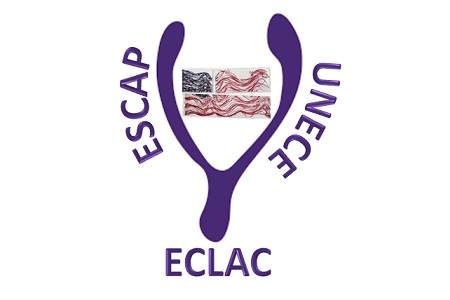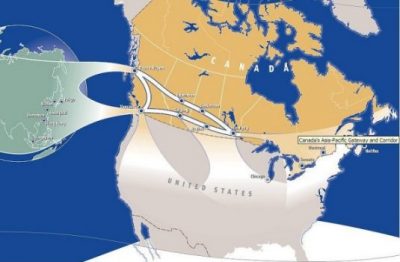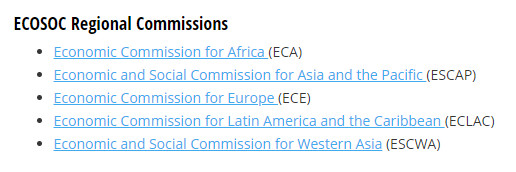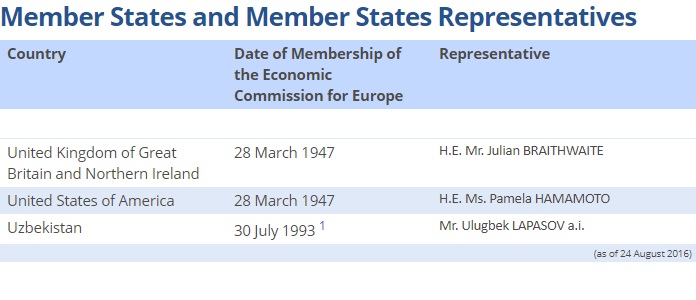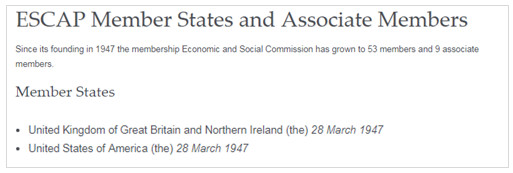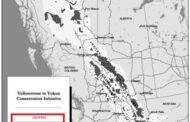Recently, the Center for Strategic and International Studies (CSIS) held an event that featured Lt. General Robert Ashley, Director of the Defense Intelligence Agency. It was an interesting interview. Ashley described the methodology he uses to do his job: If you have a problem, you must first define the problem. Then you must understand the context in which the problem is occurring including the history that brought you to where you are, the actors involved, what they are doing and why they are doing it. How does all that contribute to the problem and when you have a handle on all of that, then you can begin thinking about possible solutions.
The format of the CSIS program was that General Ashley spoke for a few minutes and then he sat for questions. One of the questions had to do with Russia and their strategy and operations in the U.S. General Ashley talked about reflexive control as a strategy that dates back to Vladimir Lenin and the Bolshevik Revolution:
The following is a link to the paper that was probably the paper that Lt. General Ashley read:
Russia’s Reflexive Control Theory and the Military
Another page on perception and manipulation was found was on the Australian Military information website. The page is not very nicely formatted but it has a lot of interesting subjects concerning psychological and information warfare including Reflexive Control.
Perhaps most interesting is a video of George Soros giving a lecture on Reflexive Control in a series about the Financial Markets.
China’s Belt and Road
The second question that drew my attention concerned China’s Belt and Road strategy. A road is never just a road, it’s a movement of civilization and the Chinese civilization is on the move.
Global Transport Systems
One of the most significant areas of my research has been the global transportation system and China’s incursion into U.S. territory is a big part of the reason why. It began with the discovery of the NAFTA Superhighway – an international corridor fully loaded with technology for surveillance and tracking. In the early government reports, the concept of technology-laden highways was called the Intelligent Vehicle Highway System (IVHS). The research accelerated when the graphic below was found in a Conceptual Design for a Trans-Pacific Multimodal Security System connected with the Asia-Pacific Economic Cooperation (APEC) organization. China is a member of APEC. The following is an excerpt from the conceptual design – emphasis added:
Trans-Pacific Multimodal Security System
An important step towards the further integration of Mexico with its APEC trading partners is the development of a modern multimodal security system between North America and Asia. The backbone of this new system will be frequent maritime routes between selected Asian ports and the Mexican ports of Manzanillo and Lázaro Cárdenas. These sea routes will be supported by enhanced rail service running through the heart of North America. … Several Asian transshipment and gateway hubs such as Singapore, Hong Kong, Shanghai, and Kaoshiung could realize quantifiable long-term benefits by participating in this initiative. Cargo generation programs, customs modernization, infrastructure enhancements, operational improvements and the use of Intelligent Transportation Systems (ITS) will help justify frequent maritime service between Mexico and Asia.
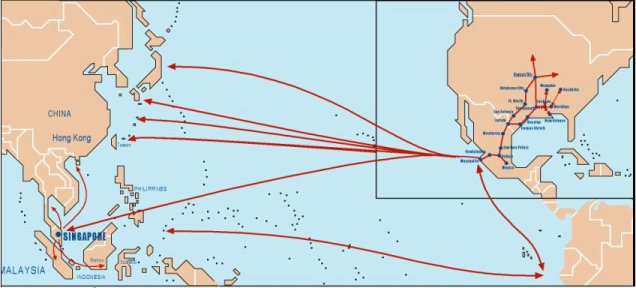
The following graphics are for the planned international corridors originating from Asia-Pacific nations (APEC) through the United States from Canada and Mexico.
In the research about APEC it was discovered that the idea of the organization was to create a common market of Pacific Rim nations. It began with the Pacific Economic Cooperation Council (PECC) from which APEC was spawned. In 1996, Seattle Washington was selected to be the permanent home of APEC. In 1993, in an article written by Walt Crowley, Washington State History, about the APEC Blake Island Summit, President Clinton summarized the unique session by declaring:
“We agreed that the Asian-Pacific region should be united not divided”.
Source links are in the following article:
In 2008, researcher Debbie Niwa did a report on the steps that were being executed to go from a sovereign and independent nation-state to a regional, political union under global governance. This information was extracted from a publication of the International Labour Organization, an organ of the United Nations.
Carving a Path to [North American] Regional Governance
By Debbie Niwa
The 2003 Labour Review cites 6 levels of the economic integration process (p. 63) [emphasis added]:
Level 1: “preferential economic areas or zones, where trade advantages exist among the participating countries, but without negotiations regarding key trade aspects between the signers.”
Level 2: “the free trade zone or area, in which tariff and non-tariff measures are usually eliminated between member countries, although each member maintains these restrictions when trading with non-participating countries.”
Level 3: “the customs union, which eliminates restrictions on the circulation of goods from member countries and imposes a common external tariff on imports from non-member countries.”
Level 4: “the common market, where commodities, capital and workers circulate freely.”
[Note that on page 64 it says: “… in the common market, the free circulation of workers in all member countries is a deliberate objective, something that does not occur with free trade agreements. In Europe, which was a common market before becoming an economic union, workers circulated well before capitals and services did so.” ]
Level 5: “The economic union . . ., in addition to the aforementioned aspects, economic policies are harmonized in terms of targets for inflation, fiscal deficits and others.
In the final level: “total economic integration establishes the unification of monetary, fiscal, labour, social and environmental policies with a supra-national authority whose decisions are binding for member states.”
The stages of the conversion from nation-state to regional governance moving towards a political union were confirmed in a powerpoint presentation that was found on the Inter-American Development Bank website. That link no longer works, but the powerpoint was captured at the time it was found
Development Stages of the European Union
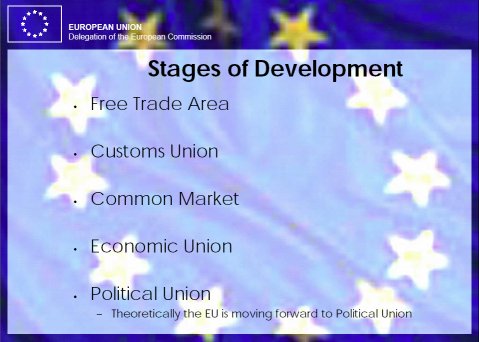
Idaho in the Global Scheme
In 2010, it was discovered that the Chinese were being invited into my own backyard – Meridian, Idaho and that the area where they were being invited to invest was connected to transportation – an intermodal commerce zone that turned out to be an inland port – an international jurisdiction unto itself. It is at the ports where Admiralty Law (Maritime Law) and Land Law converge so a road from a port is a road for international commerce in transit. Transit from port to port whether inland or seaport is regulated by international treaty or agreement.
Prior to 1991, the Interstate Highway system ended at the off ramps. Transportation legislation in 1991 made reference to including major arterials to and from ports but the specific language to do that was included until the corridor designations were made in the National Highway System Designation Act of 1995 (PL 104-59). In a letter from Transportation Secretary Federico Peña to Senator John Chafee, Chairman on the Committee on Environment and Public Works, he describes the change:
The 1995 act, which designated the NHS, directed the Department to submit, within 180 days of enactment, modifications to the NHS to provide connections “…to major ports, airports, international border crossings, public transportation and transit facilities, interstate bus terminals, and rail and other intermodal transportation facilities.” These connections, which are eligible on an interim basis for NHS funding, are subject to approval by Congress.
The policy description provides the framework for the detail definition of a system so it’s important to read the policy first before getting into the detail. Click on the down arrow below to read the policy for the transportation legislation and while reading it, think about the major policy areas in the U.S. pertaining to the environment and grant funding for “innovation”.
Transportation Policy Description
H.R. 2950 – Intermodal Surface Transportation Efficiency Act of 1991Sec. 2 Declaration of Policy: Intermodal Surface Transportation Efficiency Act.
It is the policy of the United States to develop a National Intermodal Transportation System that is economically efficient and environmentally sound, provides the foundation for the Nation to compete in the global economy, and will move people and goods in an energy efficient manner.
The National Intermodal Transportation System shall consist of all forms of transportation in a unified, interconnected manner, including the transportation systems of the future, to reduce energy consumption and air pollution while promoting economic development and supporting the Nation’s preeminent position in international commerce.
The National Intermodal Transportation System shall include a National Highway System which consists of the National System of Interstate and Defense Highways and those principal arterial roads which are essential for interstate and regional commerce and travel, national defense, intermodal transfer facilities, and international commerce and border crossings.
The National Intermodal Transportation System shall include significant improvements in public transportation necessary to achieve national goals for improved air quality, energy conservation, international competitiveness, and mobility for elderly persons, persons with disabilities, and economically disadvantaged persons in urban and rural areas of the country.
The National Intermodal Transportation System shall provide improved access to ports and airports, the Nation’s link to world commerce.
The National Intermodal Transportation System shall give special emphasis to the contributions of the transportation sectors to increased productivity growth. Social benefits must be considered with particular attention to the external benefits of reduced air pollution, reduced traffic congestion and other aspects of the quality of life in the United States.
The National Intermodal Transportation System must be operated and maintained with insistent attention to the concepts of innovation, competition, energy efficiency, productivity, growth, and accountability. Practices that resulted in the lengthy and overly costly construction of the Interstate and Defense Highway System must be confronted and ceased.
The National Intermodal Transportation System shall be adapted to “intelligent vehicles’‘, “magnetic levitation systems”, and other new technologies wherever feasible and economical, with benefit cost estimates given special emphasis concerning safety considerations and techniques for cost allocation.
Hirohito’s Revenge
 Japanese-American, Norman Mineta was the principle author of the 1991 transportation legislation. With consideration for all the research I’ve done on the design of the transportation system, I’m saying it straight out – Norman Mineta is Hirohito’s Revenge. The following are excerpts from his biography on the Asian-American website:
Japanese-American, Norman Mineta was the principle author of the 1991 transportation legislation. With consideration for all the research I’ve done on the design of the transportation system, I’m saying it straight out – Norman Mineta is Hirohito’s Revenge. The following are excerpts from his biography on the Asian-American website:
From 1975 to 1995 he served as a member of U.S. House of Representatives, representing the heart of California’s Silicon Valley.
Mr. Mineta served as chairman of the House Public Works and Transportation Committee between 1992 and 1994. He chaired the committee’s aviation subcommittee between 1981 and 1988, and chaired its Surface Transportation Subcommittee from 1989 to 1991. During his career in Congress he championed increases in investment for transportation infrastructure, and was a key author of the landmark Intermodal Surface Transportation Efficiency Act of 1991. He also pressed for more funding for the department’s Federal Aviation Administration (FAA). Later in Congress he also served on the House Intelligence Committee… Many of the commission’s recommendations were adopted by the Clinton administration, including reform of the FAA to enable it to perform more like a business.
As a result of September 11, 2001, President Bush signed into law on November 19, 2001, the Aviation and Transportation Security Act (ATSA), which among other things established the Transportation Security Administration within the Department of Transportation. During 2002, under Secretary Mineta’s direction, the department undertook the earth-moving efforts to transform, in the course of only a year, the Transportation Security Administration from a piece of paper into a fully operational agency with extensively trained new federal employees and the numerous congressional deadlines met. On March 1, 2003, the Transportation Security Agency was transferred to the Department of Homeland Security as a fully-operational agency.
Prior to joining President Bush’s administration as Secretary of Transportation, Mr. Mineta served as U.S. Secretary of Commerce under President Clinton, becoming the first Asian Pacific American to serve in the cabinet. He is the first Secretary of Transportation to have previously served in a cabinet position. Prior to joining the Commerce Department, he was a vice president at Lockheed Martin Corporation.
From 1975 to 1995 he served as a member of U.S. House of Representatives, representing the heart of California’s Silicon Valley. As a member of Congress, Mr. Mineta was known for his dedication to the people of his district, for consensus building among his colleagues and for forging public-private partnerships. Mr. Mineta’s legislative and policy agenda was wide and varied, including major projects in the areas of economic development, science and technology policy, trade, transportation, the environment, intelligence, the budget and civil rights. He co-founded the Congressional Asian Pacific American Caucus and served as its first chair.
Maritime Empire through Reflexive Control
The British Empire was a maritime empire. It was built by controlling the ports of countries that had agreements with British. The British established administrative systems working through locals but controlled by the British Governors. India’s Raj system is perhaps the most easily accessible history on how The Empire operated. The evolution of the empire was that it went from being called the British Empire to being the British Commonwealth of Nations (1921) to being called the Commonwealth of Nations (1949).
The United Nations Association was a created as a result of a pre-war agreement between Winston Churchill and Franklin Delano Roosevelt. Following the trail of history, looking at the organization from a functional point of view, it seems that the purpose of the United Nations was to establish a Global Raj System. The system is designed to replace nation-states with regional commissions with the commissions setting policy and writing law to be implemented by globalist functionaries within governments. With no disrespect to Lt. General Robert Ashley, it’s not the Russians who are the experts at reflexive control. They are amateurs compared to the British. The entire United Nations system is a system of reflexive control and not surprisingly, it’s by looking at transportation systems that it can be seen most clearly.
“As the umbrella for the UN’s functional and regional commissions, and operational and specialized agencies, it links the setting of global norms with their implementation. Across diverse fora, it brings together all the different people and partners involved in achieving sustainable development, while fueling broader awareness and action through sharing its own extensive knowledge and issue expertise.”
United Nations Economic Commission for Europe (UNECE)
The UNECE was established in 1947. The United States joined on March 28, 1947.
The following is an excerpt from the history section of the UNECE organization:
… When it was established in 1947, ECE was given the mandate of helping to rebuild post-war Europe, develop economic activity and strengthen economic relations between European countries and between them and the other countries of the world. However, the Iron Curtain which separated East and West shortly after ECE’s establishment forced it to deal only with questions that were of common interest to East and West, despite their different economic systems and their political and ideological confrontation.
For more than 40 years, ECE was the only instrument of economic dialogue and cooperation between these two radically different systems, and it may legitimately be proud of the results achieved in such a difficult context including the network of “E” roads linking all European countries, the harmonization of road signs and signals, safety and anti-pollution standards for motor vehicles, standards for the transport of dangerous goods by road, the agreement for the development of combined transport, standards for perishable agricultural produce, agreements on customs procedures and various trade regulations, standards for the electronic exchange of trade and transport data and conventions on transboundary air pollution, the protection of watercourses and the transboundary effects of industrial accidents. At the same time, its analyses and statistics on regional economic development are considered authoritative.
The British were first out of the box to plan the international network of roads. The Declaration on the Construction of Main International Traffic Arteries, a treaty among 33 nations was signed in Geneva on September 16, 1950 including the Union of Soviet Socialist Republics. The Declaration included a listing of the routes, the standards for roadway construction, and ancillary services to be provided along the roadway: frontier crossing facilities, garage and other accommodations, First-Aid and Telecommunications.
Backing up to 1944, the United Nations Monetary and Financial Conference was held in Bretton Woods, NH led by Britain and the U.S. The purpose was to establish a global financial system for post-war reconstruction and to begin the process of establishing an International Trade Organization that would establish and enforce trade among nations for international commerce. In 1947, the General Agreement on Tariffs and Trade was signed. Article V Freedom of Transit defined the policies for facilitation of international commerce.
Parallel Construction
Dwight David Eisenhower was the first NATO Supreme Allied Commander in Europe (1951-1952). In 1953, he took office as the President of the United States. Eisenhower’s first priority was to build a national network of highways across the United States. The Congress passed and Eisenhower signed the Federal-Aid Highway Act of 1956. The original name of the system was the National Highway Defense System. It came to be known simply as the Interstate System.
UN Economic and Social Commission for Asia and the Pacific (ESCAP)
According to the transport history on the ESCAP website:
The Asian Highway project was initiated in 1959 with the aim of promoting the development of an international road transport system in the region. From 1960 to 1970, potential routes were identified and analysed. However, the progress was slow until political and economic changes in the region spurred renewed interest in the network in the late 1980s and early 1990s.
The Asian Highway network now comprises over 141,000 km of roads passing through 32 member countries. The network extends from Tokyo in the east to Kapikule, Turkey in the west and from Torpynovka , Russian Federation, in the north, to Denpasar, Indonesia in the south.
Under a renewed initiative of the Commission, the Asian Land Transport Infrastructure Development (ALTID) project was launched in 1992. The project provided a framework for the development of a region-wide integrated transport network comprising of road and rail networks. A series of studies for the development and formulation of the Asian Highway network covering all subregions was conducted between 1994 and 2002. These studies, together with a series of meetings of the member countries at the subregional level, helped to build consensus on an agreed network.
As described in The Grand Chessboard of the Trilaterals (link above), APEC was established in 1989 and Bill Clinton’s meeting the Chinese on Blake Island was in 1992. The following is a link to the Asian Land Transport Infrastructure Development Project (ALTID).
Development of the Infrastructure for Integrating Asia’s Land Transport System
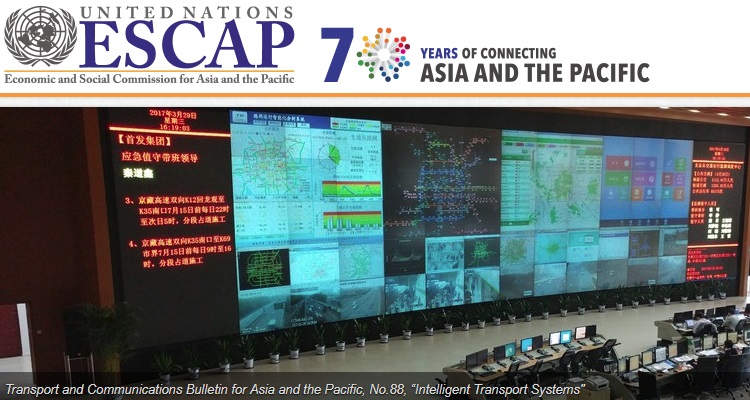
The conceptual design for the Trans-Pacific Multimodal Security System shown above is a section of the Asia-Pacific regional transportation system as a component of the global transportation. Our defense establishment had to know about it because our Interstate highway system was built as a defense highway and the defense department controls a network of those highways Strategic Highway and Strategic Connectors (STRAHNET). This system is described in research titled, Bridge Over the Legal Divide and both Lockheed and Booz Allen Hamilton were involved in the design and development of the technology for the transportation systems. If you read about the transportation systems for ESCAP, you’ll find that they are identical to the U.S. transportation system plans – including the technology – because the global transportation system is a cookie cutter system – the same strategic systems being implemented everywhere. It’s a cookie cutter world.
Oh.. and by the way, if you want to find Russian Collusion, start with Sam Nunn and the Cooperative-Threat Reduction Initiative and then follow the trail of this wench:

